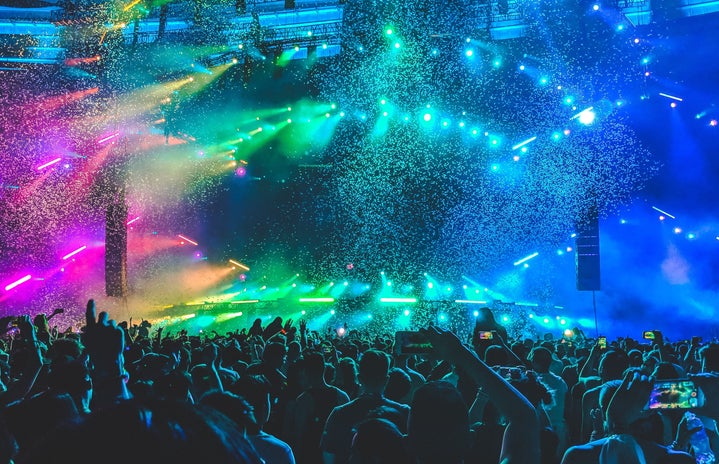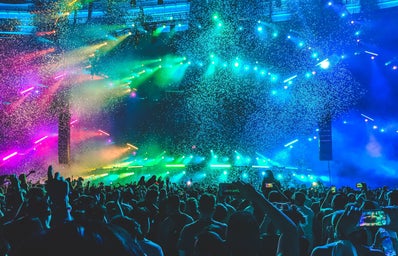Every country has something that draws attention and sets it apart from others. Culture is one of the factors that contribute to form the identity of a people and make it so special. Each national festival exalts its tradition and customs, and celebrating this culture is essential to unite people and make them begin to see themselves as a nation.
Do you know some festivals that take place in Latin America? We have made a list of some that certainly show a little bit of the culture and customs of each country with the participation of people who attend these festivals. We hope you enjoy and include some of these countries in your travel itinerary.
- Día de los Muertos – Mexico
-
Día de Los Muertos is a celebration that honors the loved ones who have already gone. This traditional Mexican festival has been going on long before Europeans arrived in America, more than three thousand years ago. It starts from the pre-Hispanic belief in the return of the deceased on the first days of November. To welcome them, people set up altars with candles, incense, sweets, and toys, and dress up in flowered skulls, which have already become the symbol of the country.
Today, Día de Los Muertos takes place on November 2, the day when, according to belief, the dead have divine permission to visit relatives and friends. People decorate their homes with flowers, erect altars for their loved ones, and prepare delicious dishes, usually the favorites of those who are gone. In the streets of Mexico City, for example, incredible stops take place with people dressed in skulls or death, with fascinating costumes and makeup.
Chiara Ingravallo, a 19-year-old resident of Monterrey, in Mexico, comments about the importance of this festival for Mexicans: “Remembering our culture and customs is something that makes us feel part of a community and strengthens our identity”, she says.
We will take the opportunity to indicate a film: Coco, Disney animation, which portrays very well how this festival takes place in Mexico and its importance for its people. The film shows us a little of the Mexican culture, but also brings a beautiful reflection of love and family. It is available on Disney+.
- Inti Raymi – Peru
-
One of the most famous celebrations in Peru is Inti Raymi. An Inca festival that takes place on June 24th in Cusco and marks the winter solstice in the southern hemisphere in honor of the sun god, Inti.
In the past, during the festival, there was a new fire ceremony. The Inca gave the order to put out all the fire in the city of Cusco to light the new one that was distributed from the main fire to all the others in the city, meaning a new beginning for the people.
The festivities begin at the Sacred Temple of Coricancha, a place where a ceremony to invoke the Sun-god is held, and proceed to Sacsayhuaman to hold the main celebration. Beautiful parades take place in the streets with dances, music, and typical clothing of the Inca culture. The ceremony symbolizes the values and the memory of Peruvian ancestors.
“It’s definitely one of the most important festivities in Peru”, says Peruvian Yulisia Aquino, a 19-year-old social science student at the National University of Cusco, the city which is the epicenter of the celebrations. “Not only because it attracts the attention of many tourists around the world, but because it represents the Inca legacy”. Regarding the importance of the festival for her people, Aquino says that through this ceremony they exalt all the wisdom that their ancestors left, and it is a way to thank the Sun-god and the goddess of nature who are like “sources of life” for them.
Peruvian Leonel Vital de la Sota, 27 years old, says that this celebration is a very good representation of his Inca ancestors. For him, participating in the celebration is a “unique sensation” because of the good feeling provided by the ceremony. He also thinks the festival can attract the attention of tourists all over the world.
- Fiesta de La Vendimia – Argentina
-
It is a traditional popular festival originating in the province of Mendoza, Argentina, which takes place on the first Saturday in March. The festival celebrates the new grape harvest and the process of transforming grapes into wine.
To celebrate the harvest of the grapes, four main events take place: the blessing of the fruit, white path of the queens, merry-go-round and central act, being the last, the most representative and expected of all. The events are attended by many dancers and artists who present artistic light and sound shows involving music, dance, and, of course, a lot of wine. In addition, a queen is chosen to represent the province for one year.
There are also special wine activities that allow you to participate in the harvest. For lovers of the beverage, this is a unique opportunity to visit more than a thousand wineries in the region, which at this time of year show their full potential in the production of the most diverse types of wine.
Matías de la Fuente, a 23-year-old Argentinean, says that this festival shows the culture of the city of Mendoza. He says it is also a way to honor the people who work in the vineyard: “the work of the people who harvest the grapes is vital because without them none of this would be possible”, he comments.
- Semana Valdiviana – Chile
-
This festival takes place in a week full of traditional festivals that celebrate the founding of the city of Valdivia and mark the end of the summer season in the region.
Every year, starting February 9, several festivities take over the city streets, but the main event takes place on the last night of the week when more than 40 boats parade with magnificent scenery along the Calle-Calle river. Music and fireworks attract thousands of spectators who marvel at an explosion of color and the display of boats on the water.
The allegorical parade of boats has been a tradition since the 17th century. In the past, settlers protested against the Spanish administration by sailing their boats along the Calle-Calle river. This act marked the city of Valdivia, and today it has become a big party. In addition, the party also includes a craft fair and a space for games. Locals and tourists can enjoy all of this, as well as try typical foods and dance to local music.
Chilean Iván Felipe Vallejos, 28, says that the event represents “in every way the culture of Chile”. For him, the colorful event, with its artistic and cultural festivals, “always has the ability to unite Chileans.”
- Carnaval – Brazil
-
Carnaval is celebrated in various parts of the world, but it is in Brazil that this festivity stands out for its greater revelry and colors that enchant the natives and also many tourists.
This festival arrived in Brazil in the middle of the 17th century, under the influence of the Carnaval festivities that took place in Europe. There, these celebrations were composed of exuberant and glamorous balls and parades. Here in Brazil, this celebration took a different course. Some concepts have remained, such as Carnival masks and colorful costumes, but styles of music such as samba and axé, dances, animation, and the contagious joy of Brazilians have renewed the way of celebrating Carnaval.
The celebrations take place during the four days preceding Ash Wednesday, the beginning of Lent, in every state in the country. Of course, some states stand out, such as Bahia, where electric trios drag crowds through the streets of Salvador; Pernambuco, with its contagious frevo and giant puppets animating the party; Rio de Janeiro and São Paulo, with colorful samba school parades in the sambódromo and many street blocks.
Influenced by his family, Marcos Vinycius Pessotto, a 19-year-old boy, always had his life involved in samba and also in Carnaval. Today he is a rhythm player for the Nenê de Vila Matilde samba school. For him, the dedication that is seen in Brazil to prepare this great event is not seen anywhere else. As a Brazilian, the drummer says that Carnaval “is part of us”, and celebrating this party “is a unique and inexplicable sensation”.
End of the list. These are some of the festivals that take place here in Latin America and exalt the culture of their countries.
We truly hope that soon we can travel the world again and experience these amazing festivals and a little more of our neighbors’ culture.
—————-
The article above was edited by Giulia Lozano Pacini.
Like this type of content? Check Her Campus Cásper Líbero’s home page for more!

